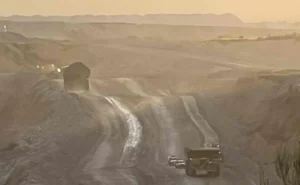Results of the latest Emissions Reduction Fund auction have shown a slight recovery in abatement acquired by the Morrison government, but serious questions remain around the ability of the fund to deliver what is needed to meet the government’s Paris Agreement goals.
The results of the tenth Emissions Reduction Fund auction published by the Clean Energy Regulator on Friday showed that the government secured contracts for 1.71 million tonnes of emissions reductions across 11 abatement projects.
The result is a notable increase from the last Emissions Reduction Auction held by the Clean Energy Regulator mid last year, which netted just 59,000 tonnes of abatement contracts, but it makes an almost negligible dent to the more than 100 million tonne target for the fund, set as part of the Morrison government’s plan to achieve it’s 2030 emissions reduction target.
“The volume purchased at this auction was considerably higher than the previous auction and highlights the important role the Government plays in underpinning investment in the carbon market,” chair of the Clean Energy Regulator David Parker said.
The auction was the first time that the Clean Energy Regulator had offered flexible “options” contracts for the delivery of abatement by the projects, providing proponents protections from contract breach if an abatement project fails.
Under the options contracts, projects were granted a right to sell abatement to the government at the agreed price, but with no contractual obligation to do so.
Two-thirds of the contracts awarded at the auction chose the flexible contract option, with the regulator saying the result indicated the pilot was a success.
“I am really pleased with how the optional delivery contract pilot went—we will have a good look at the results and use learning from the pilot to chart where we go from here,” Parker added.
“Although we don’t expect that all abatement contracted under the optional delivery contracts will be bought by us in the end, it doesn’t matter who purchases the credits—all the abatement contributes to Australia’s emissions reduction targets.”
Market analysts welcomed the introduction of the options contract, saying that it provided projects flexibility and opened up more abatement supply to participated in the auctions.
“The regulator has mentioned that it was hoping for some volume to come to this auction so that it could send a price signal for future auctions and to unfreeze the forward pipeline of new projects. And I think this auction result will do that,” Market Advisory Group’s Raphael Wood told a post-auction briefing organised by the Carbon Market Institute.
“It is a fantastic incentive for project developers to have that floor. I think it’s possibly one of the best into this regulatory interventions in this market to help supply come on,”
The Morrison government has committed an additional $2 billion to fund the purchase of emissions reductions through the Emissions Reduction Fund.
The Emissions Reduction Fund serves as the central emissions reduction policy of the Morrison government, which seeks to buy emissions reduction from a range of eligible projects, that include reduced emissions from agriculture, waste and land clearing, as well as revegetation activities.
The results from the latest auction show abatement was secured at an average price of $16.14 per tonne, with an overall value of the contracts totalling $27.6 million, which is an almost 15 per cent increase over the $14.17 average price paid at the previous auction held in mid-2019.
Despite the higher price on offer, the regulator still secured the second smallest volume of emissions reduction purchased at an ERF auction to date, with the regulator indicating that it again refused to purchase higher priced bids for emissions reductions.
“The message remains that you need to bid competitively to be successful in a competitive market,” Parker added.
However, a reluctance from the government to increase the per tonne price it is willing to pay to acquire emissions reduction has attracted some criticism, as market participants complain that the supply of cheap abatement has already been exhausted.
The regulator blamed the record low emissions purchases made through the ninth auction on its close timing with the 2019 Federal election and suggested that the subdued result at the tenth auction was partially due to the impact of the Covid-19 outbreak.
It raises the question of whether the government will be able to purchase the more than 100 million tonnes that need to be delivered by the Emissions Reduction Fund under the Morrison government’s plan to achieve its 2030 emissions reduction target.
Federal energy and emissions reduction minister Angus Taylor welcomed the outcome of the auction, saying that it was pleasing that a high proportion of the successful projects were located in regional areas.
“These auction results show that the Emissions Reduction Fund is continuing to support practical action to reduce emissions right across the 0economy while improving productivity and providing social, economic and environmental benefits,” Taylor said.
“Importantly, the ERF continues to support those in regional areas working hard to generate carbon offsets, and having a positive impact on global emissions.”
The federal government is currently considering the recommendations of a review of emissions abatement opportunities completed by an expert panel led by former Origin Energy CEO Grant King.
Parker, who sat on the expert panel, said that there were some “interesting ideas” being recommended to the government, but was unable to confirm when the recommendations will be released publicly.
RenewEconomy and its sister sites One Step Off The Grid and The Driven will continue to publish throughout the Covid-19 crisis, posting good news about technology and project development, and holding government, regulators and business to account. But as the conference market evaporates, and some advertisers pull in their budgets, readers can help by making a voluntary donation here to help ensure we can continue to offer the service free of charge and to as wide an audience as possible. Thankyou for your support.











